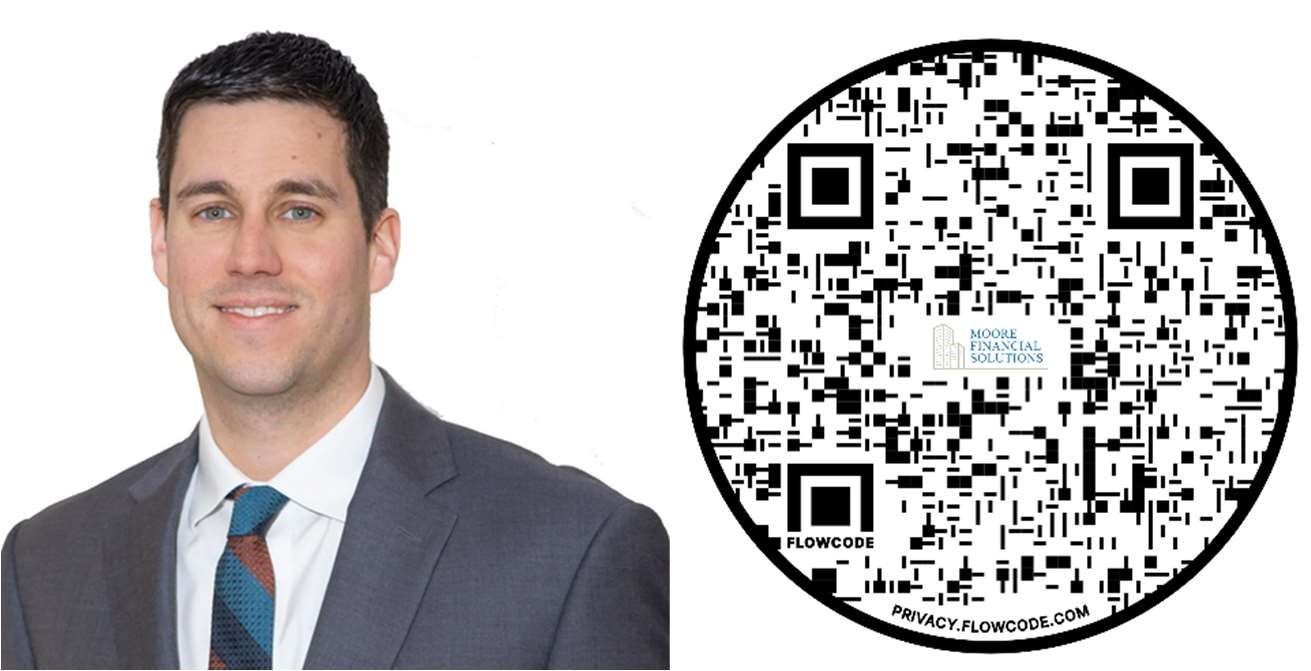Moore Financial Solutions Second Quarter 2023
After many quarters of muted performance, the U.S. stock market was able to record an 8.3% return in the second quarter of 2023. This move from 4,109.31 to 4,450.38 on the S&P 500 comes as welcomed news to U.S. stock market investors who have diligently waited for the storm of rising rates to pass (1). This artificial intelligence (A.I.) boom in technology stocks sent stock prices and earnings expectations higher. This quarter, we’re excited to review our take on positive performance to the technology sector regarding A.I., recent positioning by the Federal Reserve on interest rates, and the Moore F.S. strategy on positioning of assets within your account.
As the world rapidly evolves and mankind looks for the next big thing, it seems each quarter we can discuss a new global topic. Near a century and a half ago, electricity changed American homes and businesses meaningfully and opened the doors to the industrial production age. Looking back several decades, the creation of the internet increased business efficiency in ways few could truly fathom. Next on the horizon might just be artificial intelligence (A.I), which is a branch of computer science dealing with the simulation of intelligent behavior in computers and refers to the capability of a machine to imitate intelligent human behavior (2). As a hypothetical, A.I. could design your kitchen remodel and give you infinite options to consider. A.I. is open 24/7 to immediately answer every question you ask about kitchen remodeling. Then, when you give the approval, it can have the complete product list in your virtual cart or that product list waiting for pickup at the local home improvement store. A.I. could create an immediate boost to the financials of some companies, in this case, the home improvement store. Goldman Sachs strategists estimate that generative AI could create productivity gains that result in S&P 500 companies expanding profit margins by about 4 percentage points in a decade following widespread adoption (3). As a partial owner of S&P 500 companies, this might positively impact you financially. Many investors benefited from the iShares Global Tech ETF by Blackrock (IXN) which posted a 38.72% increase for the first half of the year, plus dividends (4). It benefited significantly from Nvidia (now the third largest holding) surging 189% on increasing expectations of future microchip dependency partially fueled by A.I. implementation (5). But A.I. likely comes at a huge risk, as many have discussed recently, due to increasing fears of the line between computers and human emotion being blurred. Although we won’t predict the timeframe or likelihood of implementation, we feel there is potential for companies to monetize A.I. in a safe and effective manner.
The Federal Reserve has clearly indicated their goal of 2% inflation and has used interest rate increases and balance sheet reduction as their primary means to accomplish this goal. These tools make the cost to borrow money high and money harder to come by, as there are fewer dollars floating around the economy. In May, the Federal Reserve raised rates by a quarter of a percent. A month later in June, they did not raise rates and voiced their intent to pause increases for that month. The S&P 500 responded nicely to this news, with a 6.5% increase for June. We believe Jerome Powell will utilize interest rate increases two to three more times, then, potentially back off within 18-24 months with a rate decrease. We use the inverted yield curve as the reasoning behind this. Currently, Moore F.S. can utilize a 1-year
U.S. treasury that yields about 5.25%. By contrast, a 20-year U.S. treasury only yields about 4.25%. Thus, the fixed income market is tipping its cap to rates likely not being as high a few years from now, in our opinion. Moore F.S. has adopted a strategy of buying short-term treasuries with a portion of the cash held in accounts, when appropriate for clients. Thus, instead of operating at a 1% weighting to money market funds, in many situations, we are reducing the cash to buy ultra short treasuries to take advantage of this yield opportunity. These ultra short treasuries are often purchased at a discount, $975 hypothetically, and typically mature at $1000 a few months later. We take seriously the task of making your money work hard for you and make every effort to create interest within your account. We welcome you back to the era of being able to receive decent interest on low-risk savings and believe inflation has created a higher need to ensure money isn’t sitting at a bank earning almost zero interest.
At Moore F.S. we strive to voice our goals and how we work with clients. Pridefully, we act as your fiduciary, meaning Tyler Moore will always manage your funds with what is your best interest, as opposed to simply setting up your funds and not providing on going management, as many firms will do. One very tough aspect of our strategy is riding out the down markets and resisting the urge to make changes. For example, in 2021-2022, we added Covid-19 recovery names such as Carnival Cruise Lines, Builders FirstSource Inc., Royal Caribbean, etc. as we anticipated vaccine development, herd immunity, and emotional tolerance of Covid would lead to a more normal way of life soon (we use this as a conversational example and not all clients hold these assets). Our strategy was to remain committed to the broad U.S. stock market while adding slivers of assets that we anticipated would perform well (because these assets fell farther and faster than the broad market generally speaking) in an effort to create better performance in your account. Though these assets have begun to perform as expected and many are posting nice returns, the lesson here has been patience, as these assets have been susceptible to pain from interest rate increases, banking concerns, etc. The conclusions that we draw here are that some of the best strategies may at first stumble out of the gate, and at times may seem as if we should be making changes. Investopedia details “Odd-Lot Theory” as a phenomenon where investors are chasing trends, instead of remaining committed to their plan (6). In booming markets, they aggressively buy into the market just before the peak. More than once we’ve heard something like, “it’s going to go to the moon I can feel it,” regarding assets like Dogecoin, Gamestop, etc. just to see these assets fall significantly. Additionally, in a panic, they sell their shares just before the market bottoms out, effectively buying and selling at the two worst times. It is in these down-market cycles that we aim to make our biggest impact on your money by remaining committed to our plan and your long-term goals. Some of the biggest investment mistakes were made by panicking out of the market only to get back in after the recovery, a situation Moore F.S. intends to avoid. In our strategy we will guide you through down markets and intend to guide you to better market cycles. We believe down markets will occur 20% of years and with the S&P 500 sitting at 4,450.38 today we have recovered 958.8 points from the October 2022 lows (up 27.46% since the lows) but need to climb another 368.24 points (8.27%) to get back to the January 2022 highs (7). We remain extremely optimistic on the direction of U.S. equities noting the reliance of U.S. companies on fuel prices. June 2022 offered U.S. diesel prices near $5.754 per gallon whereas this June, companies celebrate a $3.802 average cost per gallon of diesel (8). Additionally, a lower fuel price adds to consumer discretionary income. Moreover, the Federal Reserve claims work is not done as it relates to increasing interest rates, but in our opinion, we’ve likely experienced the worst of interest rate rises and the remaining increases are priced into U.S. equities. We feel these two factors in combination with a strong consumer still riding the sugar high of pandemic cash, and a strong labor market will serve as a strong back drop to equity performance.
I’d like to thank you for the continued trust and faith you have in me as it relates to providing you with fiduciary investment management. One year ago, my quarterly review mentioned, “bear markets historically last 449 days when they precede a recession, compared to 198 when a recession does not occur” (9). When markets have moments of sudden decrease it is tough on all of us, but we must remind ourselves not to be emotional and that, historically, broad equities will return to higher values. As a reminder, Charles Schwab will soon be the new custodian of all Moore F.S. accounts, and I look forward to answering any questions about this detail. Please refer to recent correspondence regarding this situation and feel free to call me directly with any questions you may have. I take pride in being your direct contact and remain committed to bringing you maximum efficiency through my platform, while providing the same personalized service you’ve come to know over the last eleven years.
Tyler A. Moore
913-731-9105

- https://finance.yahoo.com/quote/%5EGSPC/history/
- https://www.investopedia.com/terms/a/artificial-intelligence-ai.asp
- https://www.reuters.com/markets/us/wall-st-week-ahead-artificial-intelligence-gives-real-boost-us-stock-market-2023- 05-19/#:~:text=Goldman%20Sachs%20strategists%20estimate%20that,stock%20market%20facing%20numerous %20headwinds.
- https://www.marketwatch.com/investing/fund/ixn
- https://www.marketwatch.com/investing/stock/nvda?mod=search_symbol
- https://www.investopedia.com/terms/o/oddlottheory.asp#:~:text=The%20odd%20lot%20theory%20is,to%20generate% 20odd%2Dlot%20sales.
- https://www.marketwatch.com/investing/index/spx?mod=home-page
- https://www.eia.gov/dnav/pet/hist/LeafHandler.ashx?n=PET&s=EMD_EPD2DXL0_PTE_NUS_DPG&f=M
- https://www.forbes.com/sites/sergeiklebnikov/2022/05/23/heres-how-long-it-takes-for-stocks-to-recover-from-bear- markets/?sh=11bf99252565 (AND) https://www.tmoorefinancialsolutions.com/moore-financial-solutions-second- quarter-2022
This material has been prepared for information and educational purposes and should not be construed as a solicitation for the purchase or sell of any investment. The content is developed from sources believed to be reliable. This information is not intended to be investment, legal or tax advice. Investing involves risk, including the loss of principal. No investment strategy can guarantee a profit or protect against loss in a period of declining values. Investment advisory services offered by duly registered individuals on behalf of CreativeOne Wealth, LLC a Registered Investment Adviser. CreativeOne Wealth, LLC and Moore Financial Solutions are unaffiliated entities.



